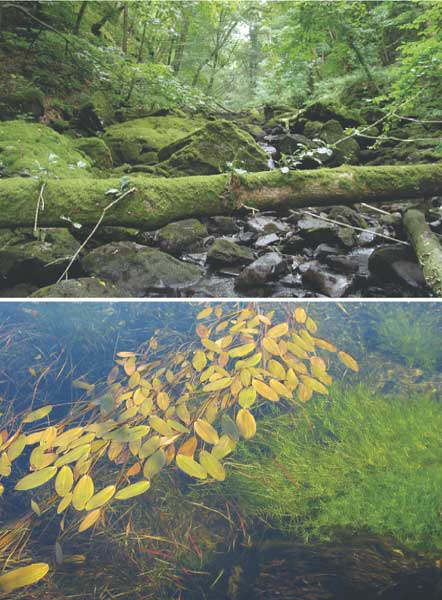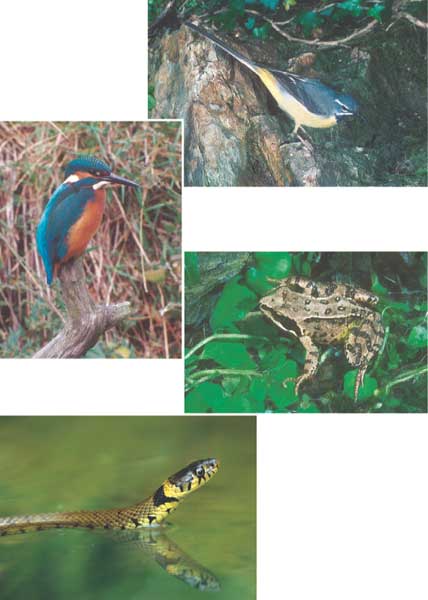


Preface
Take a journey from Liverpool, at whose University some of the
seminal research on Welsh rivers was done fifty years ago, to the tip of western
Wales where the headlands of south Pembrokeshire meet the swells of the Irish
Sea, and you may pass over a range of Welsh freshwater environments. You will
cross the Dee, whose tributary waters, ponded in the artificial Llyn Celyn,
supply the north-west with drinking water and the Welsh with an understandable
anger for valleys and villages forcibly flooded. You may divert towards the
streams of mid-Wales, where the acidifying gases of the English Midlands’ industry
still have their legacy in reduced diversity of invertebrates and fishes. Perhaps
you will reflect, with the American ecologist, Aldo Leopold, that an ecologist
lives in a world of wounds... the doctor who sees the marks of death in a community
that believes itself well and does not want to be told otherwise.
But eventually you will pass into the wonderful, still-intact floodplains of
the Tywi, commanded by the castle of Dryslwyn on its island in the middle,
or, by another route, the Teifi upstream of Cardigan; you may reach the enchanting
ash-clothed reaches of the Gwaun as it falls from the Preseli Hills into lower
Fishguard, and drink your pint drawn from the barrel on the table in the pub
at Pontfaen. Perhaps you will walk from Haverfordwest along the Cleddau and
see the compass-net fishermen patiently waiting for the salmon. And if you
are heedless, as once I was in taking my dog on a hike to see if it was possible
to reach Pembroke without crossing a road, you may go thigh-deep in soft estuarine
clay stained by the activities of those countless bacteria that make our world
go round. At Pembroke you will see, on the Commons, a stream subjected to the
worst horrors of drainage engineering, but you must see it as potential for
enlightened future restoration if the EU Water Framework Directive is ever
allowed to emerge as the revolutionary legislation that it could be.
When it comes to freshwaters, the Celts have the best of it. There are, of
course, the Cumbrian Lake District and other gems in England, but the most
part is a fair old mess of straightened channels, banished floodplains, and
flows made brown in winter by eroded soil and green in summer by profligate
nutrients. Even the Welsh uplands have not entirely escaped. Not for centuries
have there been any truly pristine systems. The intricate roles of brown bears,
salmon, nutrients, and woody debris that have been uncovered in the rivers
of North America and Russia must also have been enacted here, but now are gone.
Nonetheless, the best of what is left is still widespread, attractive and interesting,
and enticingly accounted in this book. It has the great merit of being immediately
understandable by a readership beyond freshwater biologists, is beautifully
designed and illustrated, and could be a textbook of freshwater ecology as
easily as books so intended. A sense of place is essential to a profound understanding
of ecology and that sense is strong here. The editors and authors are to be
congratulated on a contribution as welcome in its chosen mode as that of Dylan
Thomas in his. For it is to the sloeblack, slow, black, crowblack, fishing-boat-
bobbing sea that all the rivers flow.
Brian Moss
University of Liverpool